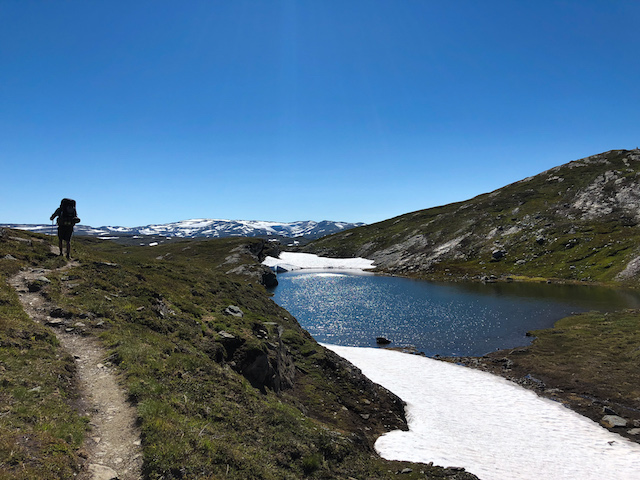Visiting Wedgemount Lake near Whistler
Are you looking for a challenging day hike or backpacking experience down the road from Whistler? Then check out Wedgemount Lake, one of the more difficult hikes in the area but with some of the more rewarding views anywhere.
Why visit Wedgemount Lake?
If you love scenic vistas that include alpine lakes surrounded on all sides by gorgeous mountain peaks and glaciers, then this is the hike for you. Plus, you can continue your hike up past Wedgemount to Tupper Lake, and even up beyond that to get close to the glacier (though be careful – glacial travel experience required beyond this point).

Do I need a pass to visit Wedgemount Lake?
No! Wedgemount Lake trailhead is the only trailhead in Garibaldi Provincial Park that doesn’t require a day pass in the summer. You do however need to book backcountry camping if you plan to spend the night, which can be done on the BC Parks website.

Where should I stay before/after visiting Wedgemount Lake?
Consider a stay in downtown Whistler or Pemberton, which are the two nearest population centers to the trailhead.

What is the parking / road to the trailhead like?
There are 2 parking lots, which look like they can fit about 100 vehicles. The trailhead is off highway 99, a few kilometers up a forest service road that is in good shape. It is dusty with a few potholes, but should be manageable by even low clearance vehicles – just take it slow and pay attention to logging activity in the area.
What do I need to bring to Wedgemount Lake?
If you are only going for the day, make sure to bring your 10 essentials to prepare for various weather conditions, as well as plenty of food and water. There are a few streams you will pass on the way up to refill water (with a filtration system), or you can filter water in the streams and waterfalls at the lake.
If going for the night (backpacking), make sure to pack your overnight gear – I’ve included my go to’s in this roundup. If just going for the day, I have some recommendations as well.

What is the elevation profile of Wedgemount Lake?
It’s about 1200m (4000ft) to reach the lake, over the course of approximately 7km (4.3 miles). That’s nearly 1000 ft / mile! It’s quite steep, and if you are carrying a heavy pack it may take you between 5-6 hours to reach the lake (one direction). BC Parks advises it takes between 4-6 hours to reach the lake by general fitness standards.

Can I swim in Wedgemount Lake?
Absolutely! It is however direct glacial runoff water so it is COLD. I do a lot of cold plunges and was only able to withstand a few minutes in the lake at a time. However, it is super refreshing on a warm day!

What is the trail like at Wedgemount Lake?
The trail is primarily through forest and under tree cover, switchbacking up until about 1km below the lake when you encounter a boulder field. However, while the boulder field is steep, you can mostly follow various trails around the boulders (versus having to hop on them). The hike in the forest is steep hiking over dirt and tree roots. For the final push, you may find using your hands helpful to navigate safely around the boulders, but generally using your hands is not necessary. For up to date conditions, make sure to check out Alltrails (and download the map in advance if you can).
I hiked with poles which was particularly important given the weight of my pack, and that helped a lot to reduce pressure on my knees during the descent.

How challenging is the trail and how does it compare to other local hikes?
By the standards of the hikes in the North Shore of Vancouver and in the Sea to Sky Corridor, Wedgemount is considered one of the hardest hikes in the area, primarily due to the grueling slog of elevation gain – not because it is technical, dangerous or exposed.

When is the best time to visit Wedgemount Lake?
Summer, between July and September, is the best time to visit the lake. If hiking in May or June, there may still be snow on the lake and trail, and sometimes the lake doesn’t thaw out completely until July depending on the year’s snowpack.
What kind of facilities are there at Wedgemount Lake?

BC Parks maintains two areas in Wedgemount – the area by the emergency shelter (the shelter itself is not usable for cmaping) as well as the area by the lake (approximately half a kilometer walk between the two). At the top of the hill by the shelter, there are numerous wooden tent pads, a urine-diverting toilet, and a bear hang. By the lake, there is a throne style toilet wrapped in a canvas privacy shelter, designated tent sites lakeside on the dirt/gravel, and a bear hang (however the bear hang was broken when I visited in July 2024 – check current conditions). The toilet by the lake is temporary and set up for the summer months only. There is no trash collection or toilet paper, so be prepared and follow leave no trace principles.
How busy is the trail?
Due to the difficulty of the trail, it is less popular than Elfin Lakes or Garibaldi Lake, for example. When I did this hike I only encountered a few hikers during the week but many more day hikers on the weekend. Because you can spread out around the lake to enjoy it, and because there are two main areas for camping and viewing the lake, it doesn’t feel crowded.

Is there an ice cave?
It depends! Over the years the glacier has receded and the existence of an ice cave has changed over time. When I visited in July 2024, there was a quickly melting ice cave up above Tupper Lake. To get there, you must cross over to the righthand side of the waterfall that feeds into Tupper Lake (looking up mountain) and follow a faint trail up. Be careful not to actually enter the ice cave. Ice caves are inherently dangerous and melting, with rocks and ice shards falling at any time. Travel at your own risk.

What else is there to do in the area?
If you are spending multiple days up at the lake, you can consider hiking to Mt. Cook or Mt. Weart, part of what’s called the Armchair Traverse. Some people attempt the 5 peaks (Cook, Weart, Wedge, Parkhurst and Rethel) over a few days. These are not official trails but more scrambles, some with class 4 and 5 exposure, glacier travel, and should not be attempted without mountaineering experience.
Other hikes and adventures in the area can be enjoyed in Whistler or Pemberton. For example, you could consider hiking Joffre Lakes (about 40 minutes further away) or head back down to Squamish and visit some of the waterfalls along the sea to sky corridor. You can check out some of those in my Sea to Sky Highway itinerary.






